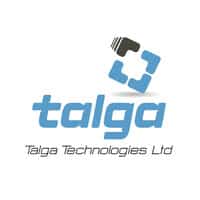Stellantis and CATL have announced an agreement to invest up to €4.1 billion in a joint venture to establish a large-scale lithium iron phosphate (LFP) battery plant in Zaragoza, Spain. The facility, designed to be entirely carbon neutral, will be developed in multiple phases with investment plans tailored to each stage.
Production at the Zaragoza site is expected to commence by the end of 2026, with the potential to reach up to 50 gigawatt-hours (GWh) of capacity, subject to the evolution of the European electrical market and continued support from Spanish and European Union authorities. The joint venture, split equally between Stellantis and CATL, aims to enhance Stellantis’s LFP offerings in Europe, facilitating the production of more high-quality, durable, and affordable battery-electric vehicles (BEVs) in the B and C segments.
This collaboration builds upon a non-binding memorandum of understanding signed in November 2023 between the two companies. The agreement outlined plans for the local supply of LFP battery cells and modules for electric vehicle production in Europe and established a long-term partnership to support Stellantis’s advanced BEV technology roadmap.
John Elkann, Chairman of Stellantis, stated, “Stellantis is committed to a decarbonized future, embracing all available advanced battery technologies to bring competitive electric vehicle products to our customers. This important joint venture with our partner CATL will bring innovative battery production to a manufacturing site that is already a leader in clean and renewable energy, helping drive a 360-degree sustainable approach.”
Robin Zeng, Chairman and CEO of CATL, added, “The joint venture has taken our cooperation with Stellantis to new heights. I believe our cutting-edge battery technology and outstanding operation know-how, combined with Stellantis’s decades-long experience in running business locally in Zaragoza, will ensure a major success story in the industry.”
The new Spanish facility will enhance CATL’s capabilities to support customers’ climate goals and underscores its commitment to advancing e-mobility and energy transition efforts in Europe and globally. CATL already operates two plants in Germany and Hungary, bringing state-of-the-art battery manufacturing technology to Europe.
Stellantis is pursuing a dual-chemistry approach—utilizing both lithium-ion nickel manganese cobalt and LFP technologies—to serve a wide range of customers while exploring innovative battery cell and pack technologies. The company aims to become a carbon net-zero corporation by 2038, including all emission scopes, with single-digit percentage compensation for remaining emissions.
The transaction is expected to be finalized in 2025, pending customary regulatory approvals and conditions.
Source: Stellantis
















